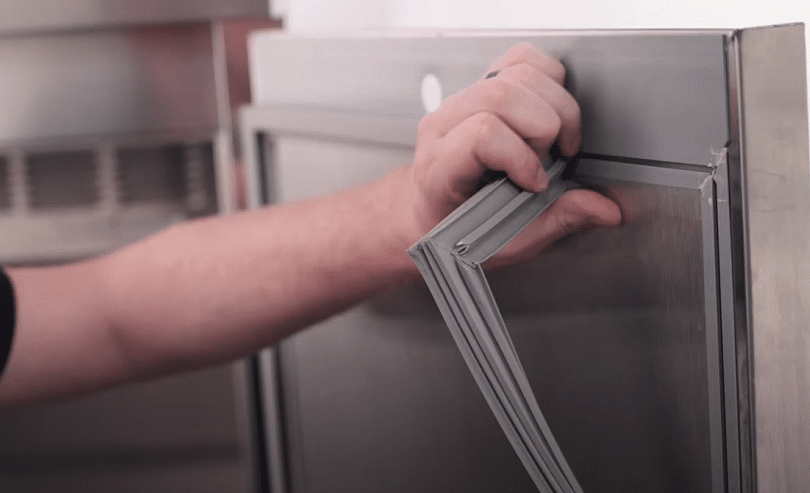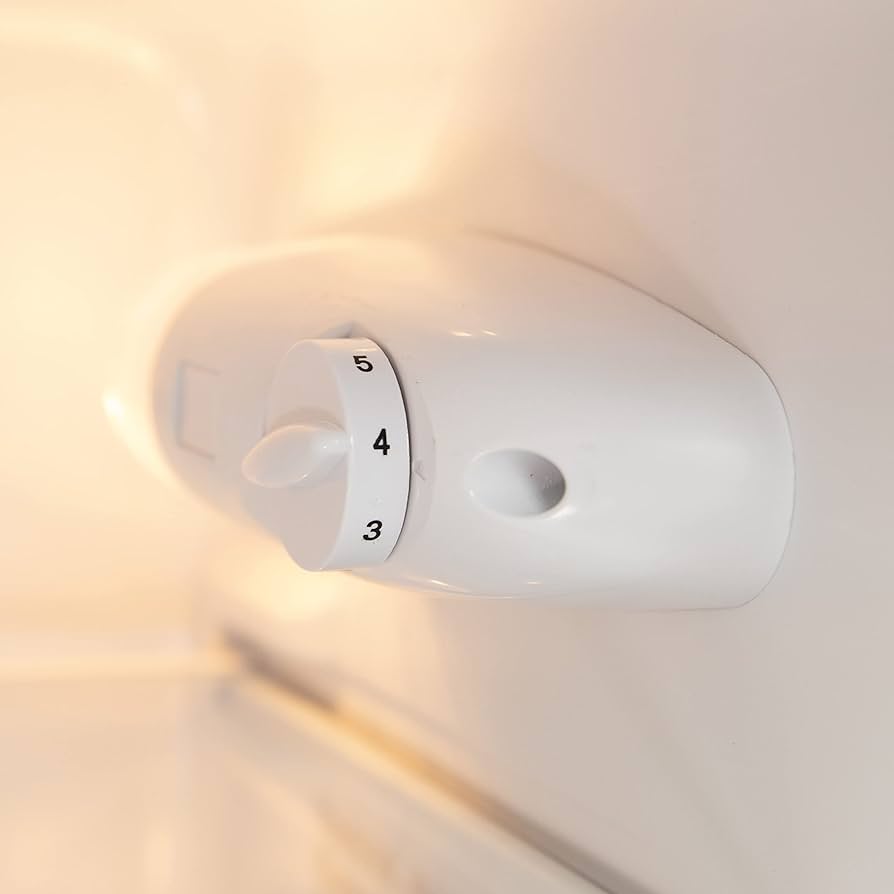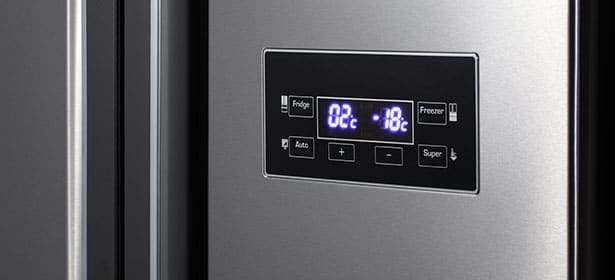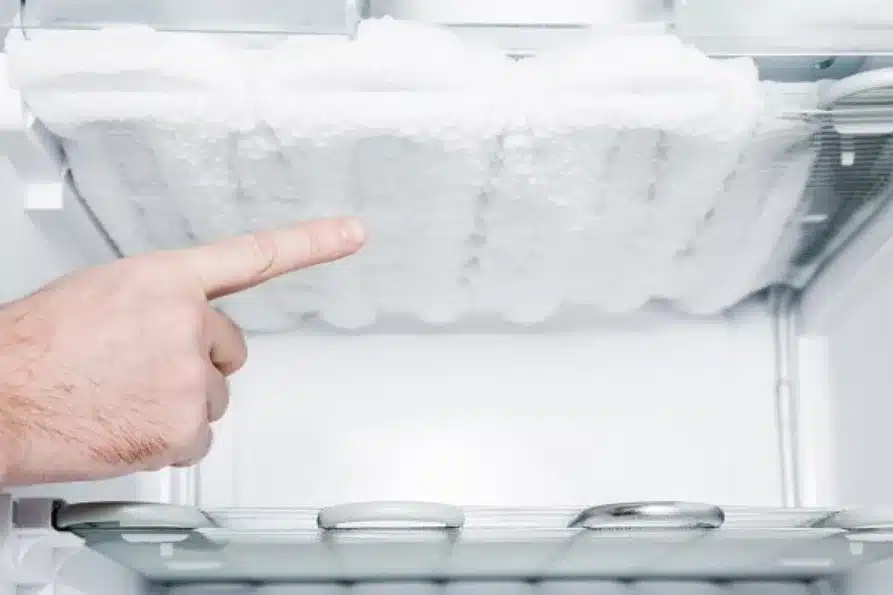Table of Contents
Refrigerator-freezing food is a regular problem for many households, resulting in frustration and food waste. Fortunately, you can take a few easy solutions and precautions to ensure your refrigerator keeps your food at the right temperature without freezing it.
lets explore 9 Above-Refrigerator Cabinet Ideas.
Inspect the door seals.

The refrigerator’s interior temperature may fluctuate due to defective door seals that let cold air out. Check the seals for any signs of damage. If you see any tears or gaps, it’s time to get new ones. The problem of food freezing can be avoided by properly shutting fridge doors to keep extra cold air out of the compartment.
Adjust the Temperature:

Maintaining the proper temperature on your refrigerator is essential to keeping food from freezing. The fridge may occasionally get overly chilly due to settings being too low. Consult your owner’s manual to determine the ideal temperature range and make the necessary adjustments. After making adjustments, keep the refrigerator stable for at least 24 hours. You can ensure your refrigerator keeps your food at the ideal temperature without freezing it by regularly checking the temperature and making necessary adjustments.
Verify the Air Vents:
Blocked or congested air vents may slow the movement of cold air within the refrigerator compartment. Make sure no food or debris is blocking the vents. Adequate ventilation is essential to keeping the refrigerator’s temperature constant. Food freezing in specific refrigerator sections can be avoided by routinely checking. Also cleaning the air vents, guaranteeing even cooling and preventing cold spots.
Check the temperature in the refrigerator:
Use a thermometer to regularly check the refrigerator’s temperature to ensure it stays within the appropriate range. The ideal interior temperature range is 37°F to 40°F (3°C to 4°C). Food may freeze if it dips below this range or varies in temperature. You can prevent food from freezing by closely monitoring the temperature and taking appropriate action as soon as you notice any changes.
Examine the Panel of Control:

The settings on the control panel can affect the temperature of refrigerators with advanced functions, including ice makers and digital controls. Ensure the configurations are accurate and in line with the manufacturer’s instructions. Occasionally, temperature problems can be fixed by returning the control panel to factory settings. Unwanted temperature swings that could cause food to freeze can be avoided by becoming familiar with how the control panel works and often monitoring its settings.
Avoid Stock the Fridge Too Much:
An overfilled refrigerator may have restricted airflow, which would have made it more difficult for the device to keep a steady temperature. Arrange your items to provide enough space for cool air to circulate. Furthermore, avoid putting warm or hot things straight inside the refrigerator since this may momentarily raise the internal temperature. You can ensure that cold air circulates effectively in your refrigerator and keep food from freezing by keeping its contents in check and without overstocking it.
Diagnose the Ice Maker:
Leaks or broken parts might cause variations in temperature if your refrigerator has an ice machine. Look for any obvious problems with the ice maker and maintain it according to the manufacturer’s instructions. Another way to avoid ice formation that compromises temperature control is to defrost the freezer section routinely. You can keep the fridge’s temperature control from being disrupted and food from freezing by taking care of any ice maker problems as soon as they arise and by doing routine maintenance.
Think About the Type of Fridge Freezer:

The freezer and refrigerator sections of side-by-side refrigerators are separate, occasionally leading to uneven cooling. To avoid food freezing, pay close attention to where things are placed within each portion. Spread everything out evenly, taking care not to obstruct air vents. By being aware of the specific cooling dynamics of your side-by-side refrigerator and modifying your food storage accordingly. You can avoid temperature imbalances and guarantee that the freezer and refrigerator sections remain at ideal temperatures.
Allow Your Fridge to Rest:
If you’ve followed the above instructions and food is still freezing in your refrigerator, it may be overworked. Particularly in warmer areas or when situated close to heat sources. Older or efficient freezers may find it difficult to keep a constant temperature. If you need to upgrade, think about going with a more energy-efficient model. Your fridge can work less hard and prevent food from freezing because of temperature swings by making sure it isn’t overworked and is running efficiently.
Prevention Is Essential
Handling the aftermath is more difficult than preventing food from freezing in the refrigerator. By routinely checking and servicing your appliance, you can help prevent problems from arising in the first place. For your refrigerator to function well, monitor the internal temperature. Arrange the contents well, and take quick action to fix any issues. By taking proactive steps and putting preventive measures in place, you can lessen the chance of food freezing and take advantage of the comfort of a working refrigerator.
Extra Advice to Stop Food From Freezing

You can use a few more techniques in addition to the ones discussed above to stop food from freezing in your refrigerator. To start, see if you can measure the temperature of your refrigerator by pouring a glass of water inside; if the water freezes, your refrigerator is too chilly. Second, get to know your control panel and learn how to troubleshoot any problems that may arise from temperature. Finally, to check temperatures accurately, think about getting a fridge thermometer. These additional measures will help prevent your groceries from freezing and guarantee that your refrigerator runs efficiently.
To sum up, managing a freezer that freezes food might be annoying, but if you have the appropriate information and take precautions. You can maintain your goods fresh and your refrigerator operating at peak performance. You may wave goodbye to frozen food problems and have the ease of a well-performing refrigerator that keeps your food at the ideal temperature without freezing it by inspecting door seals, modifying temperature settings, and ensuring enough ventilation.

